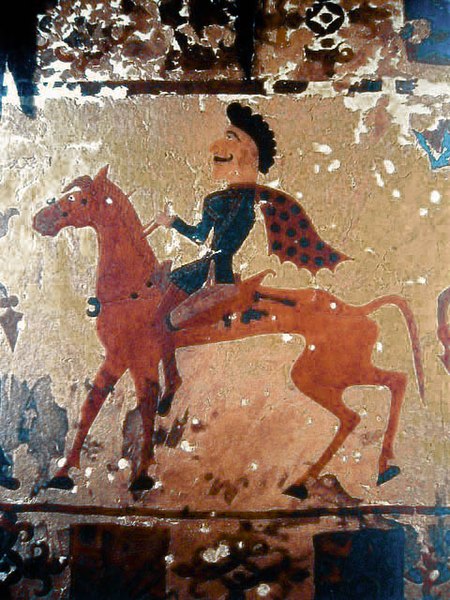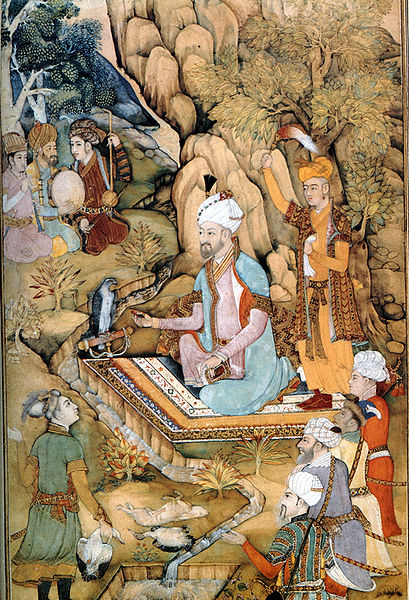Dayuan is the Chinese exonym for a country that existed in Ferghana valley in Central Asia, described in the Chinese historical works of Records of the Grand Historian and the Book of Han. It is mentioned in the accounts of the Chinese explorer Zhang Qian in 130 BCE and the numerous embassies that followed him into Central Asia. The country of Dayuan is generally accepted as relating to the Ferghana Valley, controlled by the Hellenistic polis Alexandria Eschate, which can probably be understood as "Greco-Fergana city-state" in English language.
Probable Greek soldier (maybe king according to royal headband), woolen wall hanging, Sampul tapestry, 3rd-2nd century BCE, Sampul, Urumqi Xinjiang Museum.
Silver tetradrachm of King Eucratides I, who probably lost the territory of Ferghana to the Sakas.
A Saka (Scythian) horseman from the area north of the Tian Shan, Pazyryk, c.300 BCE.
Zhang Qian leaving emperor Han Wudi, for his expedition to Central Asia from 138 to 126 BCE, Mogao Caves mural, 618–712 CE.
The Fergana Valley in Central Asia lies mainly in eastern Uzbekistan, but also extends into southern Kyrgyzstan and northern Tajikistan.
Two snakes, Sokh, Ferghana valley, 3rd millennium BCE.
Probable Greek soldier in the Sampul tapestry, woollen wall hanging, 3rd-2nd century BC, Sampul, Urumqi Xinjiang Museum.
The tomb of Ali at Shakhimardan
Babur, the Turco-Mongol founder of the Mughal dynasty, was a native of Andijan in the Fergana Valley.







